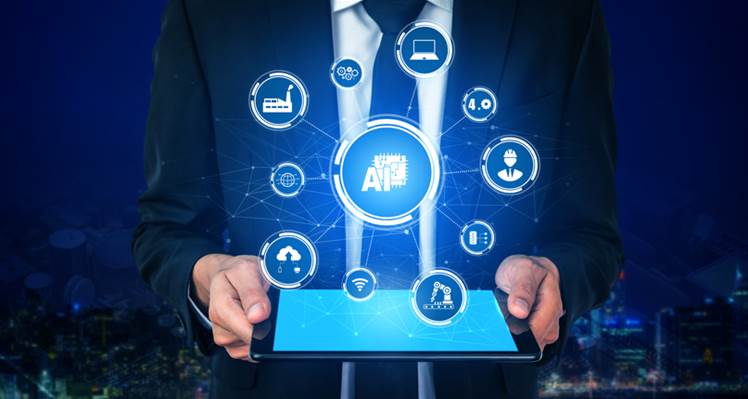Too often, the story we hear about data is, well, that we don’t. Digitisation generates massive volumes of data, but many organisations don’t fully exploit it.

When they do, the benefits can be significant. Just look at the Queensland Office of State Revenue (OSR), which administers $24 billion in taxes and royalties across the state and holds 187 million records. It wasn’t until the OSR harnessed machine learning that it was able to use that data to determine – with 70 per cent accuracy – which taxpayers were at risk of defaulting. This enabled it to undertake targeted campaigns to support those people.
For many organisations, trying to seize the advantages made possible by data-driven intelligence can feel like trying to tap into out-of-reach superpowers. But in reality, most data intelligence capabilities are interdependent and leaders can start building them into their strategies and infrastructure right now.
Four key capabilities will determine organisations’ ability to turn their data into tangible business value – these “superpowers” are necessary for competing now and in the future. And just like the great powers we venerate in fiction, they come with great responsibilities.
Telepathy: the ability to act on live intelligence
The turmoil of 2020 intensified focus on this capability: not only is there a bigger appetite for predictability, but the pandemic illustrates how fast external circumstances can render data irrelevant. To survive when stakes are high and speed is essential, organisations need to be able to make decisions through instant, integrated, insightful analytics – ones that spot patterns early and anticipates behaviour using huge volumes of data.
Artificial Intelligence (AI) and machine learning are critical for crunching all that data in a granular, timely way – but they demand a two-pronged foundation. One is mostly structural, such as investing in open, agile architecture that can pool streams of data into a central location.
The other should dispel myths of robot overlords: the importance of human-in-the-loop (HITL) modelling and workflows. Because AI solutions lack humans’ contextual reasoning, people must always be the final decision-makers, similar to the machine learning applications at Queensland’s OSR. Starting with a proof-of-concept that reduced land tax debts by five per cent, the agency uses the tool to flag high-risk influences and propose next steps for managing debt. But a human employee ultimately decides how to approach and support individual taxpayers.
Technochauvinism — the belief that technology is always the solution — is also a risk, which means we don’t just need humans at the helm of AI-enabled decision-making, we need humans with diverse perspectives.
Invincibility: the power to innovate confidently and securely
Superior decision-making won’t come from simply collecting data – it will come from the accuracy, quality and security of information. This will require you to have a robust data governance strategy, equipping authorised users with appropriately classified data and offering visibility into data’s context and purpose.
Following a merger of two electricity distribution and transmission businesses, Tasmanian Networks Pty. Ltd. (TasNetworks) needed to establish a single data platform to standardise processes and consolidate more than 60 legacy systems – including three different asset management solutions, two HR platforms, and three finance solutions.
The challenge was to establish a single repository for all enterprise data, standardise workflows and processes across the business and support performance management and efficiency improvement initiatives to improve the reliability and affordability of the service offered to customers.
By creating a clearer and more accurate picture of in-field electricity assets through the establishment of a single source of truth, TasNetworks is experiencing the benefits of better maintenance planning and fewer power outages.
Teleportation: the freedom to move instantaneously across wide expanses
Distributed applications? Third-party data sources? Private clouds? Organisations will need to be able to ensure their IT landscapes are ready for anything. They’ll also need to focus not only on data collection and quality, but also the span and accessibility of sources.
For example, renewable energy company Mercury NZ has leveraged cloud analytics to determine the energy margin for over 600,000 current and former customers – a capability that not only links revenue to underlying costs but also spans three years of data, more than half a million customers, 50 master data attributes and 30 different metrics.
Shapeshifting: the power to extract insights anywhere
Most organisations already use varied deployment mechanisms – on-premise, cloud, hybrid, multi-cloud – that demand the ability to move seamlessly through different databases. But with increasingly dispersed operations, assets and workforces, the true shapeshifter will be able to innovate without boundaries, extracting business intelligence from large volumes of data no matter where it sits in your extended environment.
This includes accessing recent and historical data sets with ease, as well as connecting data rather than just collecting it. And it will need to happen across multi-model data, on-premise and in the cloud. RPC Technologies, a manufacturer of advanced materials, struggled with this across multiple subsidiaries and regions. But it was able to build the capability by consolidating its business systems into a single cloud-based platform, achieving real-time data forecasting and 100 per cent accuracy in monthly project forecasting.
Using powers for good
Finally, none of these capabilities matter if they aren’t used with a greater purpose in mind. With the role of business shifting beyond a pure focus on capital, towards promoting social good for wider communities, goals like improved sustainability should be at the heart of everything you do – from strategy to procurement to talent acquisition.
This has powered some of SAP’s own decisions and actions, such as democratising SAP Business Technologies tools through free access, or the regional SUSTAIN consortia, which uses a blockchain network to reward suppliers who promote sustainable palm oil production.
After all, what’s the use in having superpowers if they aren’t making the world a better place?
Curious about what your organisation’s superpowers are? Take the test here.








